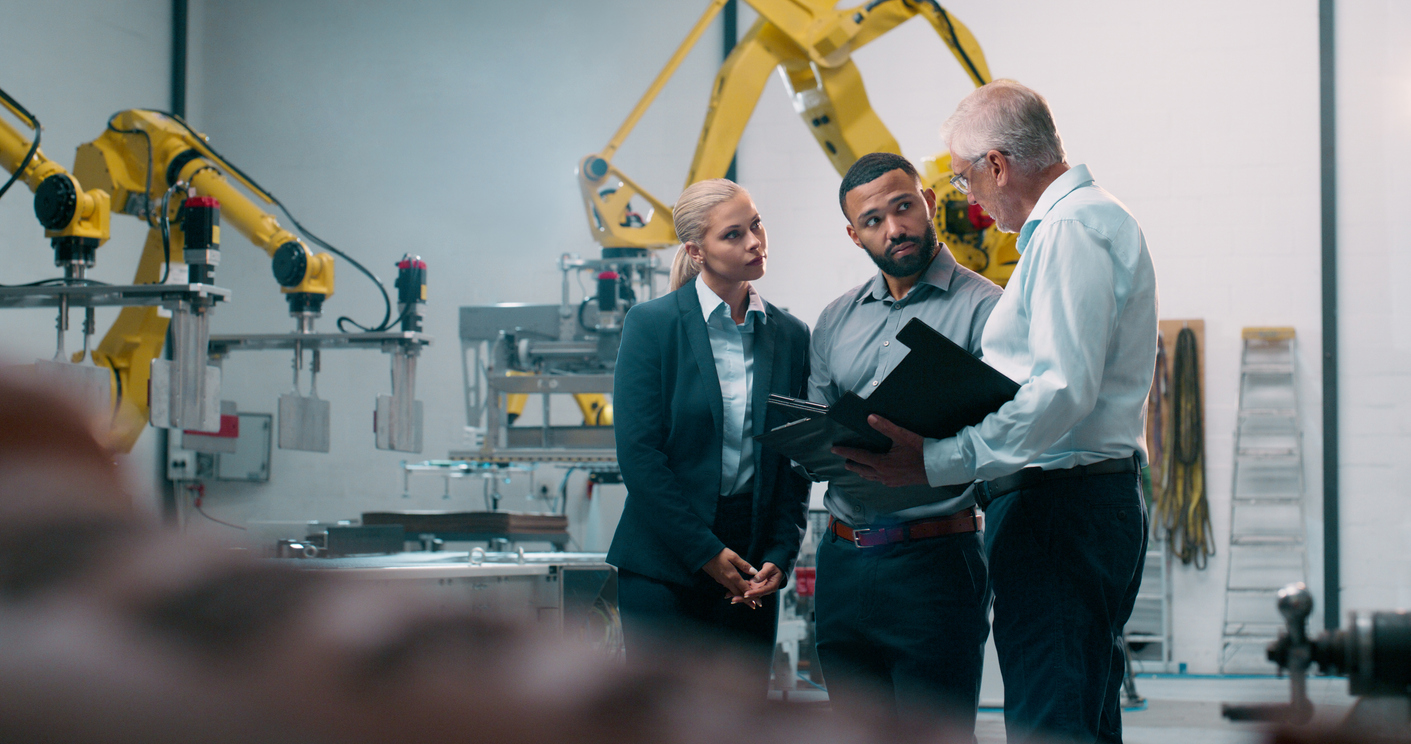Generative AI vs. Symbolic AI in Manufacturing: Using Both to Build Trust
Trust in AI depends on explainability, especially when your operations are built on precision. Pairing symbolic and generative AI can help manufacturers build reliable solutions.

Nearly half of manufacturers are still exploring AI uses cases, with a minority successfully integrating AI into daily operations, according to a Tacton survey of global brands. Ask any manufacturing leader how their organization is integrating AI into their business, and you’ll hear similar sentiments about trust in AI.
“It makes manual tasks so much faster, but we’re still trying to understand how to harness it correctly.”
“The majority of our organization is curious about AI, but some are still hesitant. They don’t think that it should replace knowledgeable employees.”
“AI is still a black box. We want to make sure we invest in a tool that’s reliable and doesn’t hallucinate results when our customers expect accuracy.”
These are valid concerns in an industry where compliance, complexity, and accuracy factor into every decision. And, these reflections highlight a trend of manufacturers intrigued by AI’s potential but cautious about its reliability, according to a recent Tacton and Manufacturing Leadership Council (MLC) masterclass, “The State of Manufacturing: How Leaders Are Creating a Customer-Centric Smart Factory in 2025”.
Building trust in AI as a workplace partner, especially in the order-to-delivery process, requires pairing human understanding and education with deterministic intelligence.
You don’t lack data, you lack structured data
There’s a common misconception that to successfully use AI, you must have better data—and more of it. “We’ll do AI later, after our data is perfect.”
While clean data is vital (garbage in equals garbage out), Nils Olsson, Chief Strategy Officer at Tacton, challenged the thinking that data must be perfect.
“The typical manufacturing company doesn’t lack data. It lacks structure,” stated Olsson.
Data often lives in scattered silos, such as emails, spreadsheets, or the heads of veteran engineers and sales representatives. It may be inconsistent and lack guardrails for AI tools, like generative AI. But “deterministic” AI can bring structure and guardrails to that data when generative AI and symbolic AI work together.
Generative AI vs. symbolic AI: demystifying the black box through multiple AI types
How does this combination work?
Generative AI in manufacturing learns patterns from large datasets. It synthesizes your unstructured data from emails, CAD notes, service logs, and more, and uses those patterns to surface insights, like optimal configurations based on a customer RFP, for example.
However, generative AI alone can be prone to hallucinations, and without understanding the logic or reasoning behind it, AI can cause skepticism about its unpredictability.
Symbolic AI, however, encodes expert knowledge, product logic, and engineering constraints into structured rules. As a type of AI used in technology for decades before AI’s recent propulsion, it helps validate and constrain what generative AI produces.
As a result—and with the final validation of human expertise—manufacturers get explainable, trustworthy AI outputs and deterministic reasoning that comes from real-life engineering logic. This application is ideal for configuration, pricing, and quoting complex products quickly and accurately.
Both types of AI alone have limits, but together, they help solve the trust problem and build confidence in AI-assisted user workflows.
Accelerating AI maturity in manufacturing: strategies for leadership
Despite its promise, manufacturers need not build proprietary large language models early.
“Some companies are saying, ‘AI is so important, we’re going to build our own large language model.’ That’s extremely expensive. Why not start with the tools that are already available?” said Olsson.
Start with small, practical, and safe applications first. Try applications that already exist. Even if your data is still messy, deterministic or rule-based AI systems can make it usable faster by enforcing logic, traceability, and consistency. That combination of symbolic and generative AI helps manufacturers move forward before achieving full data maturity, and every output can be verified against engineering, pricing, or product logic.
Addressing internal skepticism
Early success, however, depends as much on people as on technology. At JLS Automation, CEO Craig Souser described how his team addressed internal skepticism through education:
“We have people that are interested but don’t really know where to start. And then we have the dissenters, who don’t believe AI technology is ever going to replace a good programmer.”
To build confidence, JLS began with introductory sessions to get people comfortable with the base technology, starting small and demonstrating productivity gains in repetitive workflows.
Building incremental success
At Protolabs, Luca Mazzei shares a pragmatic approach to building AI maturity in manufacturing operations through incremental, explainable applications.
“Even though we’re almost digital by design, we’re going through our own digital transformation. We’re expanding our purview from prototyping to short-run production,” Mazzei said.
His team uses machine learning for pricing accuracy and efficiency while maintaining human oversight. Generative AI is used in customer service to help agents retrieve relevant, verified information from company systems. And, Protolabs is exploring how AI can read engineering drawings and digitize legacy parts data.
These applications demonstrate that trustworthy AI starts small, with transparent logic and visible value.
Build trust in manufacturing AI with Tacton
Manufacturers that combine symbolic and generative AI are already shortening their path to AI maturity.
Tacton embodies this hybrid approach within our configure, price, quote (CPQ) software and end-to-end lifecycle platform by offering deterministic, constraint-based configuration and pricing capabilities that seamlessly integrate symbolic AI with emerging generative AI technology.
For manufacturers ready to move from experimentation to execution, Tacton provides the foundation for trustworthy and scalable AI transformation.
Learn More About Tacton’s AI Solutions
Watch the Full Tacton and MLC Webinar



